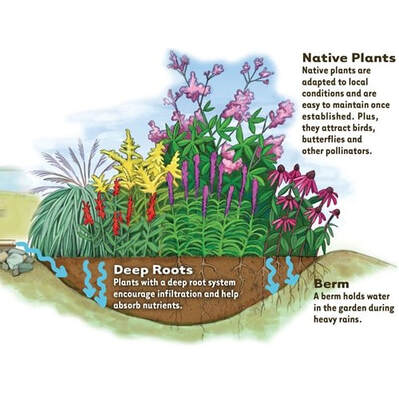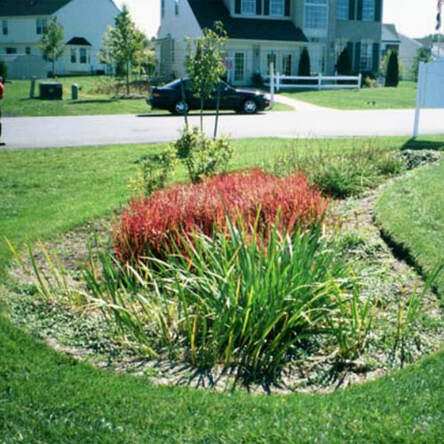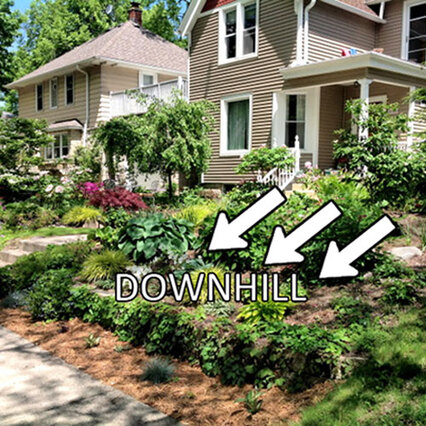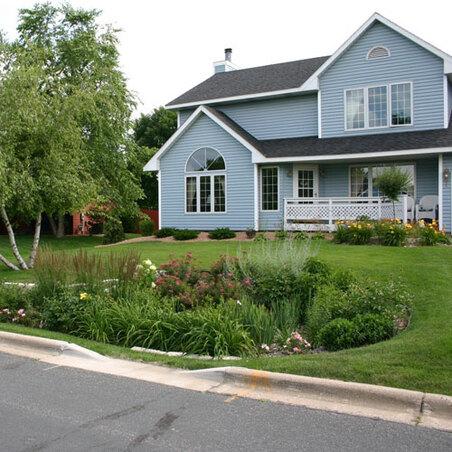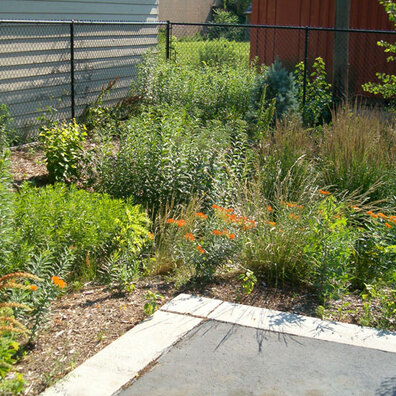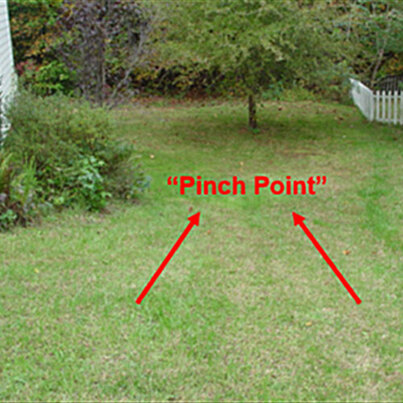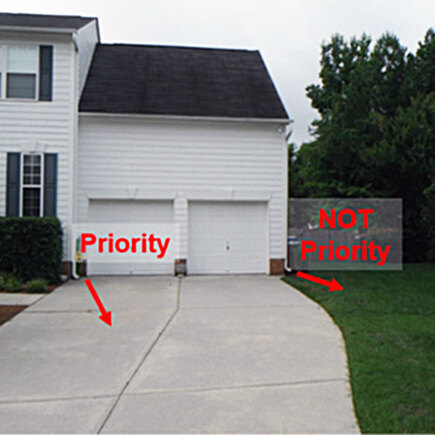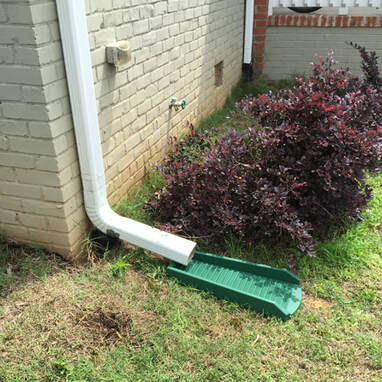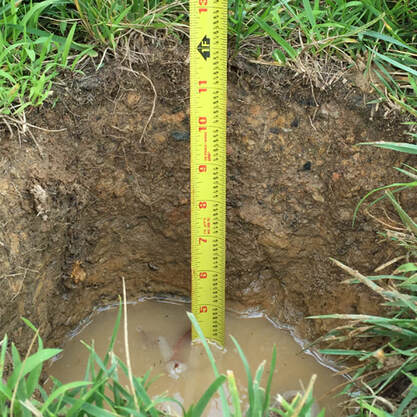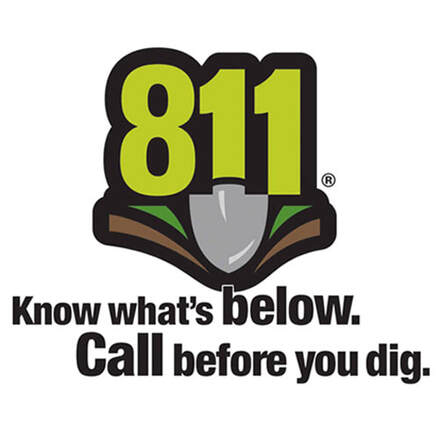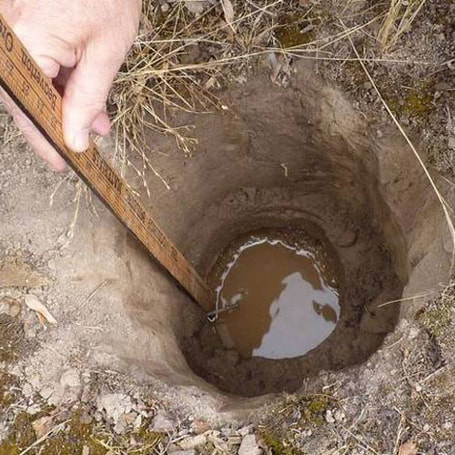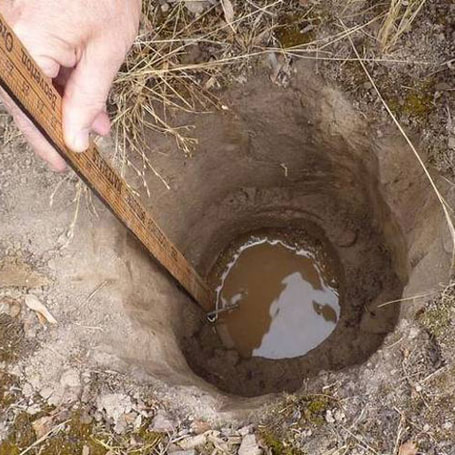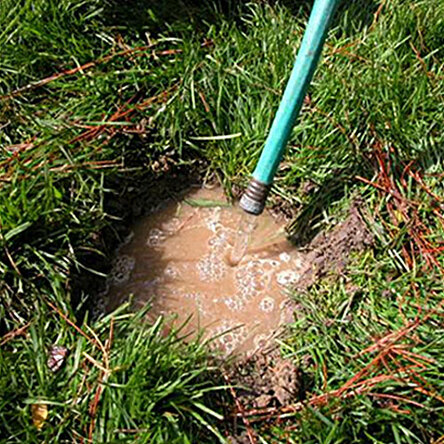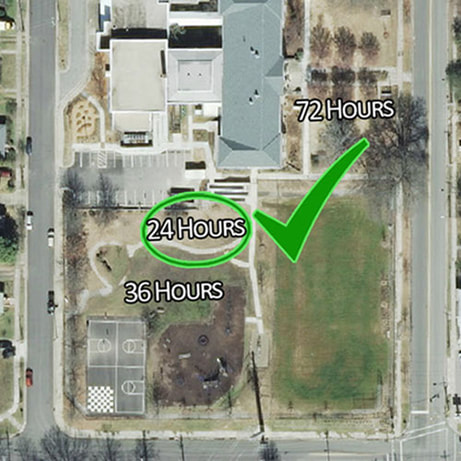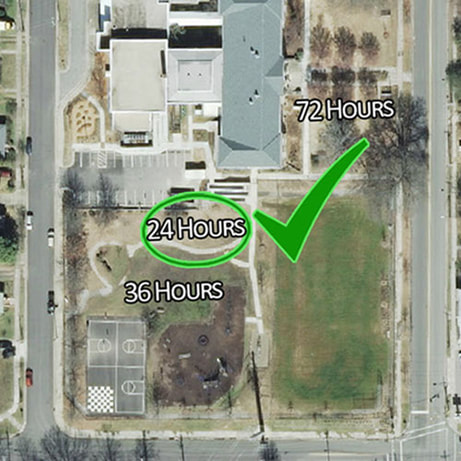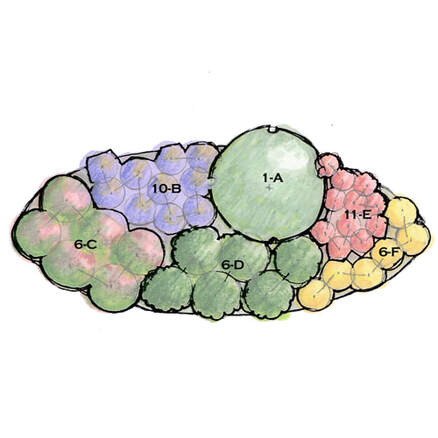|
Now that we've got the constraints out of the way, we need to find the 'pinch point' - that is, the place on your property where your water naturally flows. To capture as much water as possible, it's best to place the rain garden at a 'pinch point'.
To find your 'pinch point', simply watch your property during the next storm and watch where the water flows. This will give you a good idea of where your rain garden should go! |
|
Now that we have a site for your garden, and we know how long it takes to drain, we can move on to Step 2: Designing your Garden!
|
